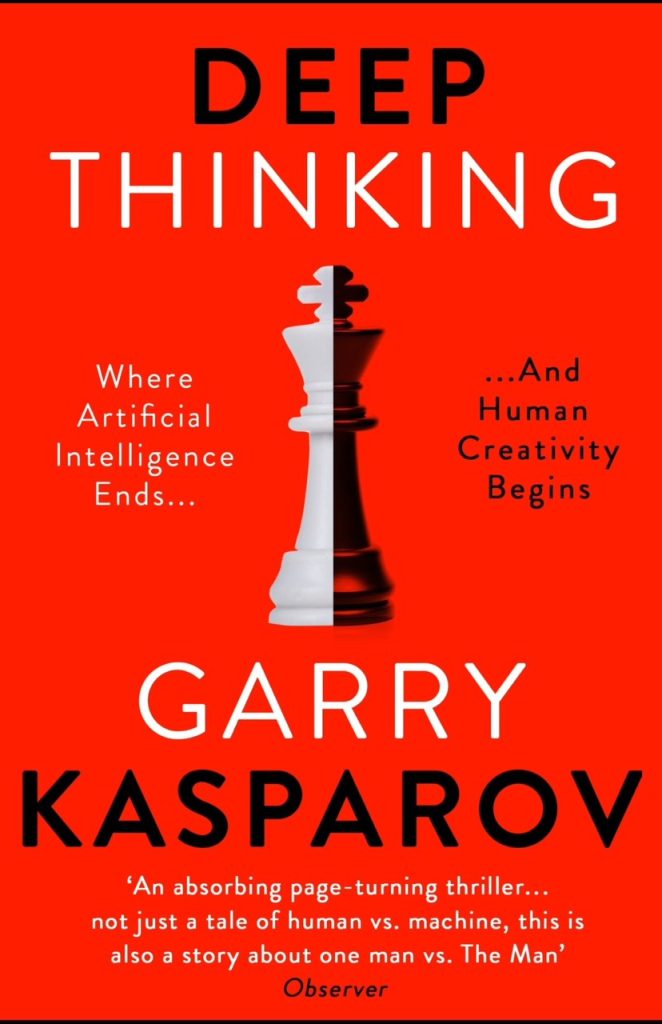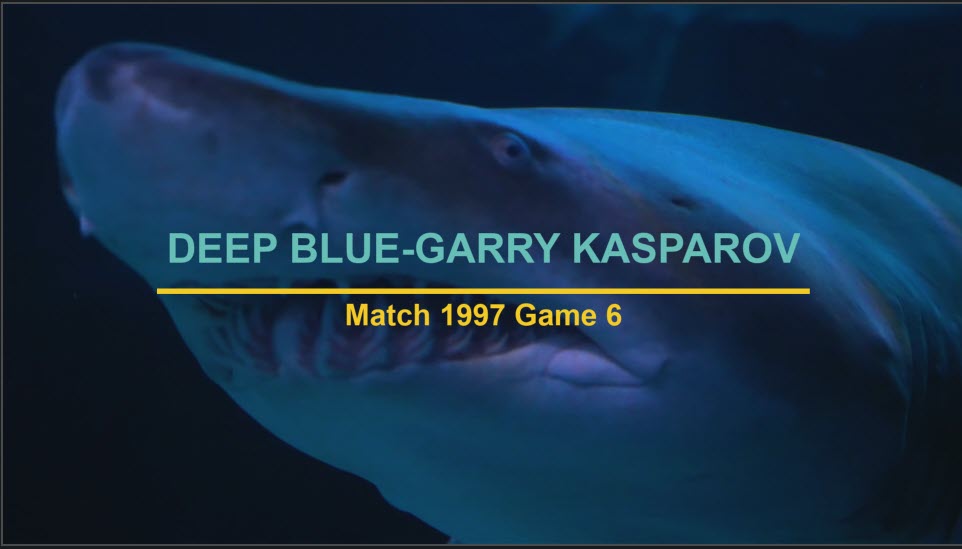Garry won the 1996 match against Deep Blue by 4-2, though not without losing the first game. The 1997 match was thus eagerly awaited: what had / could Deep Blue learn from the first match and how much would it have improved? I’ve released the videos about this wonderful match on the Silicon Road YouTube Channel! (https://www.youtube.com/@SiliconRoadChess)
Introduction: https://youtu.be/X3IiRcA4rus
Game 1: https://youtu.be/JtkUbo6x1Co
Game 2 (introduction to Ruy Lopez themes): https://youtu.be/6M4ifKYlQaw
Game 2: https://youtu.be/e5km6F4BEBE
Game 3: https://youtu.be/9KjHtK9Ka4U
Game 4: https://youtu.be/P6uDOWiesTA
Game 5: https://youtu.be/oLjkvfsgzlo
Game 6: https://youtu.be/C5j6qjyY0MA
Murray Campbell – co-creator of Deep Blue – described in detail the changes that were made to the 1996 Deep Blue in one of his scientific papers (“Deep Blue” (Murray Campbell, A.Joseph Hoane Jr, Feng-hsiung Hsu) https://doi.org/10.1016/S0004-3702(01)00129-1) In 1996, it was a huge struggle to get something out there that even just worked(!) but 1997 was less hectic. The Deep Blue team was largely building on their previous work and considering that Deep Blue had already beaten Garry in that match, it was a pretty good basis to build on!

There was a new chess chip first of all. The evaluation function was expanded from 6400 features to 8000 features and there was much more time to implement these features in software. The speed of the chess chips increased to about 2-2.5 million positions per second with double the number of chips as well as the latest generation of computer to provide the processing power. The maximum number of moves per second searched during the match was 330 million per second which is pretty impressive, even by modern standards! Murray Campbell said that that they were working the most on Deep Blue’s evaluation, rather than its speed: the software managing its parallel search was basically untouched.
It was indeed much more than just hardware! Feng-hsiung Hsu describes in his book “Behind Deep Blue” (https://www.amazon.co.uk/Behind-Deep-Blue-Building-Computer/dp/0691118183) that the Deep Blue team wanted to up their game in terms of match cleverness and preparation. Part of that was creating software tooling to make automated evaluation tuning possible and also visualization software to help Joel Benjamin analyse together with a reduced version of Deep Blue (named Deep Blue Jr). Without those visualization tools, it’s very hard to perform any sort of systematic work.
Reading Garry’s explanations before the match in his 2017 book “Deep Thinking” (https://www.amazon.co.uk/Deep-Thinking-Machine-Intelligence-Creativity/dp/1473653509) is fascinating. He says that having beaten Deep Blue convincingly in the last two games of the 1996 match, he made the typical and dangerous make of crediting his own play more than the poor play of his opponent He draws a parallel with the World Championship matches of Botvinnik who was always losing the first match and then winning the return match! His opponents – Smyslov and Tal – didn’t manage to cope with the idea of having won the previous match!

I have the feeling that Garry had the idea in his head that he was doing the chess-y stuff and the Deep Blue team was doing the science-y stuff; he was approaching the match from the chess point of view while the Deep Blue team was approaching the match from a computer point of view. I think that seeing the Deep Blue team with a large chess team – Joel Benjamin of course but also some other American grandmasters as well as the strong Spanish grandmaster Miguel Illescas – he suddenly felt that they were intruding on his territory somehow! That was worrying because you already knew Deep Blue was going to be calculating better than Garry could, but Garry really didn’t want Deep Blue to improve too much on the chess side! With such a large team, maybe Deep Blue’s openings would be excellent too! I think that that this had a huge – probably disproportionate – effect on his mood and psyche and made him very nervous and uptight about whole match.
Garry wrote that he decided to use the first few games to see if he could get a sense of Deep Blue’s strengths and tendencies: “This meant playing more passively than I preferred, although it did fit my general strategy of wanting to play quiet positions where Deep Blue’s tactical abilities would not be the deciding factor” So that explains the first opening which was an amazing success for Garry!




Great stuff, as always, thank you Matthew. I really enjoyed your series about the 1996 match, it’s a fine complement to Danny King’s book (I bought the paperback shortly after it was published). In addition, on my Kindle I have Garry Kimovich’s Deep Thinking. I am reading it at present, having been prompted by you. I plan to download and read Behind Deep Blue after I finish Deep Thinking. (although I intend to continue to endeavour to think deeply).
All the best,
Hey Mark! Yes these are all really nice books! Garry’s is very interesting as always though I think his idea of the cyborg – that man + machine is stronger than machine – is a not accurate! Behind Deep Blue is really nice too! Best Wishes, Matthew
I did not finish the reading of -Behind deep blue yet. However, i’ve just finished reading the great chapter about the 1997 match – The holy grail. Also, i would like to know how fast can modern engines resolv the 11 chess positions collected by Pierre Nolot ?
I’d love to see a video about that. This subject is awesome.
Thanks a lot Matthew.
Hey Marc, oh I’ll take a look at that! Very very fast I would imagine! Best Wishes, Matthew
Yeah, i took a look at the 1st position (Kasparov -Karpov, Lyon/New York, 1990 (20) ) and yes it’s really fast. Even Hiarcs 9 (2005) got it. However, i try it with Chessmaster 8000 (release in 2000) and it’s a disaster, just to say … he started with 26.Qd4 losing the game. In a certain sense it’s quite instructive.
Wow you really do have a great chess computer museum! 🙂 🙂 🙂